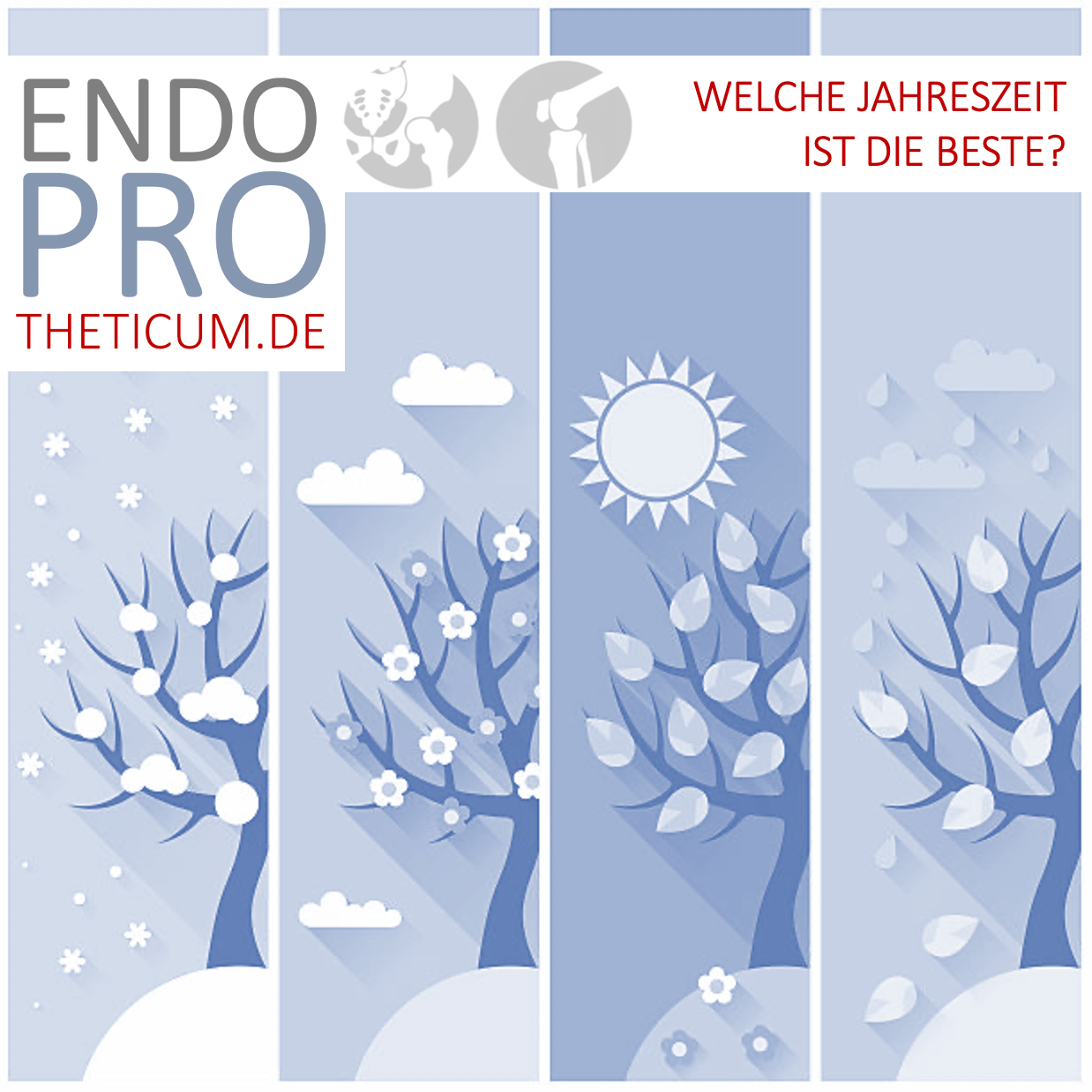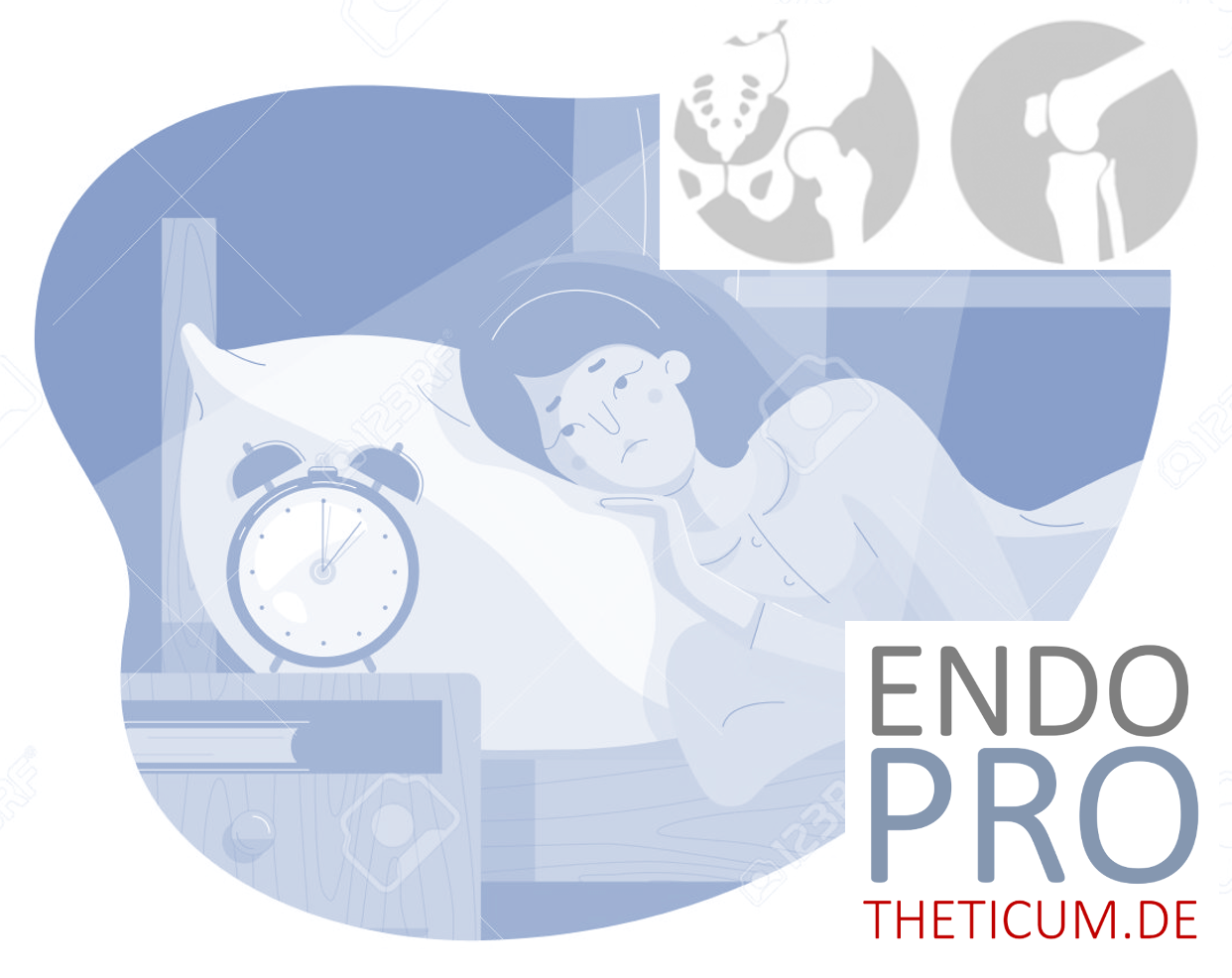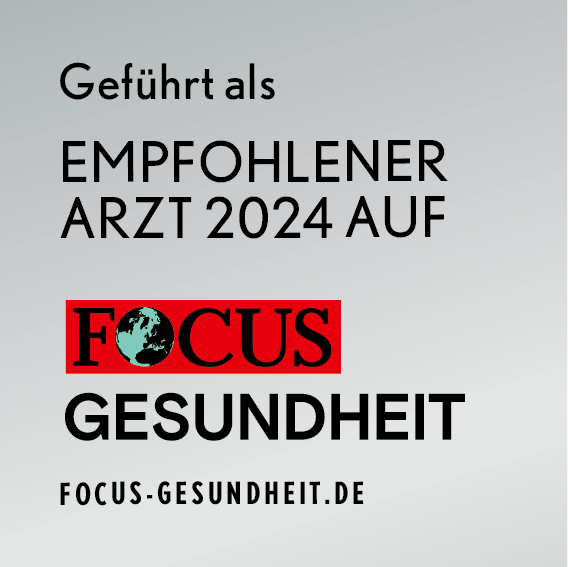Lateral sled prosthesis – often underestimated
If the knee only hurts on one side -
the lateral sled prosthesis for valgus gonarthrosis

Knee joint disease caused by wear and tear (gonarthrosis) is a widespread cause of pain, restricted mobility, and reduced quality of life – particularly in older people, but also increasingly in active middle-aged patients. When conservative therapies (such as physical therapy, injections, weight loss, and orthopedic devices) have reached their limits, the option of a knee replacement into consideration.
However, many patients and even some doctors initially consider a total joint replacement , i.e., the complete replacement of all joint surfaces. However, if the indication is appropriate, there is a more gentle alternative: partial joint replacement , often in the form of a sled prosthesis (unicondylar prosthesis). While medial sled prostheses are discussed relatively frequently, the lateral sled prosthesis —that is, partial replacement of the outer (lateral) compartment—is often overlooked or viewed with skepticism.
In this article, we look at why the lateral sled prosthesis is often underestimated, how it works, who it is suitable for, what risks exist and what is important when choosing a surgeon.
Basics: Knee prosthesis, partial joint replacement and sled prosthesis
Before we go into detail, it is important to clearly define the terms and understand the basic principles so that the special features of the lateral sled prosthesis become clear later.
What is a knee prosthesis?
The term knee prosthesis (also known as knee endoprosthesis or knee joint prosthesis) refers to an artificial implantation used to restore or replace the joint surfaces in the knee. The goal is to relieve pain and restore mobility.
Depending on the extent of the disease, different variants exist:
- Total knee arthroplasty (TEP or TKA) : replacement of all joint surfaces (femoral, tibial and, if necessary, kneecap).
- Partial knee arthroplasty (UKA for only one compartment or BKA as bicondylar partial replacement) : Only the diseased compartment is replaced, while intact structures are preserved.
- Variants such as patient-specific prostheses also exist.
The advantage of a partial prosthesis is often a more gentle operation, less bone loss, preservation of ligaments and natural structure, and often faster convalescence.
Total joint replacement vs. partial joint replacement
Advantages of partial joint replacement:
- Preservation of healthy bone material
- Preservation of ligament structures and more physiological kinematics
- Less surgical intervention, often shorter operating time and less blood loss
- Faster rehabilitation and better mobility in everyday life
- If necessary at a later date, a full denture can often be used
Disadvantages and limitations:
- Only possible if the osteoarthritis is limited to one compartment
- Higher demands on the indication and expertise of the surgeon
- Potential for progression of osteoarthritis in other compartments
- In some scenarios (e.g. multi-compartment damage) a total prosthesis is unavoidable
For this reason, partial joint replacement – especially as a sled prosthesis – is an attractive option if the conditions are right.
What is a sled prosthesis (unicondylar prosthesis)?
The term "sled prosthesis is often used synonymously with unicondylar knee prosthesis . The name "sled" comes from the fact that the implant often slides along only one side (one condyle) and only covers one runner of the knee joint—like a "sled" in the joint.
Mark:
- Only one of the two condyles (medial or lateral) is replaced – only where the articular cartilage is destroyed
- The healthy parts of the knee (articular surfaces, meniscus, ligaments, other compartments) are preserved
- The operation is less invasive than a full knee prosthesis
- The movement sequences and the “natural” knee feeling are more likely to be preserved
In many clinics, this is also referred to as a partial joint replacement – a partial replacement of part of a joint – and thus the sled prosthesis is a variant of the partial joint replacement.
Lateral vs. medial sled prosthesis
The majority of UKA procedures are performed on the medial (inner) compartment, as osteoarthritis is more common there. Lateral sled prosthesis (i.e., replacement of the outer compartment) is less common and technically more demanding.
Differences and challenges:
- The anatomical and biomechanical conditions in the lateral compartment differ – e.g., laxity, movement patterns, load distribution
- The indication tends to be narrower
- The surgeon's need for experience is higher
- Design questions for implants (e.g. mobile vs. fixed bearing) are more differentiated
Precisely because of these special features, the lateral sled prosthesis is often underestimated—many patients are referred directly for a total prosthesis, even though a partial prosthesis could suffice. However, with careful selection and an experienced surgeon, the lateral sled prosthesis deliver excellent results.
Anatomy and biomechanics of the knee joint
To understand why the lateral sled prosthesis is technically demanding – and when it makes sense – it is worth taking a look at the anatomy and function of the knee joint.
Structure of the knee joint
The knee joint is a complex joint that encompasses the articular surfaces of the thighbone (femur) and shinbone (tibia), the kneecap (patella), menisci, ligaments (cruciate ligaments, collateral ligaments), and soft tissue. It is primarily a rolling-gliding joint with a certain degree of rotation.
Important structures:
- Articular cartilage : ensures low-friction movement
- Menisci (where present): contribute to load distribution
- Cruciate and collateral ligaments : ensure stability
- Joint capsule and muscles : control, guidance and stabilization
- Compartments : the knee can be divided into a medial (inside), lateral (outside) and patellofemoral (kneecap) compartment
If osteoarthritis affects only one compartment, targeted partial replacement can often restore function very well.
Load distribution, ligaments, sliding movements
During exercise, the knee joint is subjected to forces significantly greater than body weight (2–3 times or more, depending on the type of movement). The load is transferred across the joint surfaces. Even the slightest imbalance can lead to increased wear.
Important are:
- Ligament tension : The collateral ligament (e.g. the lateral collateral ligament) in particular plays a role in sliding in the lateral compartment
- Sliding movements (translation and rotation) : when loaded, the femoral condyle slides partly backwards/forwards, combined with rotation
- Screw-home mechanism : When extending, the lower leg rotates slightly – a special feature that is more pronounced in the lateral compartment
These biomechanical subtleties make it necessary for a lateral sled prosthesis to replicate the natural movement pattern as closely as possible.
Specifics of the lateral compartment
Some special features of the lateral knee (compared to the medial one):
- Greater flexibility : The lateral side is usually slightly more lax than the medial side – that is, it allows more movement
- Different contact mechanisms : During flexion and extension, the contact surfaces in the lateral compartment change differently than medially
- Tendency to subluxation in mobile inserts : With mobile bearing designs, the risk of the inlay slipping is slightly higher on the lateral side
- Anatomical variance : The lateral femoral condyle and tibial plateau structures may be more variable
These special features require special care in design, implant selection and surgical technique to ensure optimal function and longevity.
Indications and contraindications for the lateral sled prosthesis
Not every case of knee osteoarthritis is suitable for a lateral partial knee replacement. A precise indication is essential for success and longevity. Here, we discuss when a lateral sled replacement is appropriate and what to consider.
When is a lateral sled prosthesis useful?
In general, a lateral partial prosthesis is useful when:
- the osteoarthritis isolated or predominantly in the lateral compartment (e.g. valgus gonarthrosis)
- the medial compartment is largely intact, without significant cartilage damage
- the ligamentous apparatus (especially cruciate and collateral ligaments) is stable
- the leg axis (valgus misalignment) is correctable or minimal
- with good mobility and without significant contractures
- the patient has good bone substance
Such indications for lateral UKA are described in the literature, e.g., in isolated lateral osteoarthritis or avascular necrosis of the lateral femoral condyle.
Advantages with appropriate indication:
- Maintaining healthy structures
- More gentle surgery
- Better mobility and gait feel
- Possible option to switch to a full denture at a later date
Differentiation: When is a complete denture more sensible?
In some situations, the path to a complete denture is unavoidable:
- If several compartments are severely affected (e.g. medial + lateral + patellofemoral osteoarthritis)
- If severe deformities , instabilities or contractures are present
- If the ligamentous apparatus is severely damaged or insufficient
- In inflammatory diseases (e.g. rheumatoid arthritis)
- In case of significant axis misalignment that cannot be corrected
- If other operations (e.g. corrective osteotomy) have already been performed and the anatomy has changed significantly
In such cases, a complete knee replacement (total knee arthroplasty) offers a more stable and comprehensive solution.
Exclusion criteria and special risks
The following contraindications or risks should be considered:
- Massive damage to the medial compartment or central cartilage damage (gonarthrosis in the medial area)
- Significant axial misalignment (e.g. valgus > 15 °), not correctable
- Instability of the collateral or cruciate ligaments, contractures > 15°, flexion < 100° SpringerLink
- Fractures or significant bone defects, especially in the tibial plateau
- Previous realignment surgeries, prosthesis failure, revisions
- Rheumatoid disease or other systemic joint diseases
- Infections or poor soft tissue conditions
The literature consistently emphasizes that a lack of indication discipline or a lack of surgical experience are the main causes of failure.
Mobile bearing vs. fixed bearing – advantages and disadvantages
A key design difference exists between mobile bearing (movable inserts) and fixed bearing (solid polyethylene) implants:
Mobile bearing (movable inlay):
Advantages:
- Potentially less wear as the inlay adapts
- Sliding movement can be more physiological
Disadvantages:
- Higher risk of dislocation of the inlay, especially with the lateral sled prosthesis.
Fixed bearing (solid polyethylene inlay):
Advantages:
- Lower risk of inlay dislocation
- More stable positioning due to rigid design
Disadvantages:
- possibly slightly higher wear due to less flexibility in adjustment
- Sliding movement may theoretically be somewhat more limited
fixed bearings are often recommended as a safer option.
Rehabilitation and aftercare
A good operation is only half the battle – success depends heavily on rehabilitation and the aftercare plan. Here are the essential steps and recommendations for the postoperative phase after the insertion of a lateral sled prosthesis .
Postoperative mobilization
- As a rule, early mobilization usually takes place on the day of surgery or the first day after
- Full weight bearing is often permitted immediately – depending on intraoperative stability and the surgeon’s decision
- When mobilising with crutches (e.g. walking aids) to relieve the strain in the first few days
The aim is to promote mobility, minimize the risk of thrombosis and prevent muscle loss.
Physiotherapy and stress training
Physiotherapy should be carried out gradually:
- Early phase (first week): passive/assisted movement exercises, muscle activation (quadriceps, hamstrings)
- Middle phase (2nd–6th week): active movement exercises, strength training, balance and coordination
- Late phase (from week 6): functional training, everyday movements, stair climbing, sports and leisure activities
The exact course depends on the individual healing process, muscle strength and stability.
Sports, everyday movements and long-term behavior
- Light sports such as cycling, swimming or walking are often possible at an early age
- Intensive sports (e.g. tennis, handball) should only be undertaken after consultation and under physiotherapeutic supervision
- The load on the knee joint should be increased gradually
- Regular check-ups (clinical and radiological) are indicated
- In case of complaints in the medial compartment, it should be clarified early on whether there is progression
With good rehabilitation and appropriate loading, many patients can achieve a high level of activity in the long term with the lateral sled prosthesis .
Advantages of a lateral sled prosthesis at a glance
The lateral sled prosthesis offers many advantages:
- Minimally invasive procedure
- Preservation of one's own cruciate ligament apparatus
- Shorter rehabilitation period
- More natural feeling of movement
- High satisfaction and functionality
- Easy upgrade to total knee replacement if needed
Especially for active patients between 50 and 70 years of age with isolated osteoarthritis of the outer side, the procedure is often the best solution to ensure quality of life and mobility in the long term.
Frequently Asked Questions (FAQ)
Question: Is a
lateral sled prosthesis suitable for every patient with knee osteoarthritis?
Answer: No – it is only suitable if the osteoarthritis is predominantly in the lateral compartment, the ligaments are stable, and the medial compartment is largely intact. A thorough diagnosis is essential.
Question: How long does a sled prosthesis last?
Answer: With the correct indication and surgery, studies report survival rates of 90% or more at 10 years or more. Data are less available for the lateral variant, but selected studies have shown 10-year survival rates of 94% or more.
Question: Is there a risk that a full denture will be necessary later?
Answer: Yes—especially if the healthy compartment degenerates. In that case, a full denture can usually be used.
Question: Is the surgery riskier than a full denture?
Answer: Not necessarily. As long as the surgery is performed under optimal conditions, the risks are comparable or even lower (since more invasive procedures are avoided). However, misplacement or incorrect indication increases the risk.
Question: How quickly can patients return to their daily routine?
Answer: With good healing and rehabilitation, many patients can return to everyday activities within weeks, often faster than after a total joint replacement.
Conclusion & Outlook
The lateral sled prosthesis (lateral partial knee replacement) is an often underestimated but highly beneficial option for carefully selected indications. It offers the opportunity to relieve pain and maintain mobility—with a smaller surgical depth and preservation of healthy structures—compared to a total knee replacement.
The key to success lies in:
- an exact indication
- high operational experience
- optimal implant design (often with a fixed inlay)
- careful surgical technique
- structured rehabilitation
- Selecting a specialized knee specialist
Strategies for selecting the right specialist
A crucial factor for the success of a lateral sled prosthesis is the selection of an experienced, specialized knee surgeon. Here are some guidelines and criteria:
What to look for in a knee surgeon
- Specialization and experience in the field of knee arthroplasty, especially partial joint replacement
- Case numbers – the more corresponding procedures per year, the better (surgeon and clinic)
- Publications/guideline recognition – does the physician have experience with scientific publications or specialization in professional societies?
- Technical equipment – modern implant systems, navigation, planning tools
- Transparency regarding risks, experiences and alternatives
- Aftercare & rehabilitation concept – comprehensive aftercare, physiotherapy, quality controls
- Patient recommendations and follow-up experiences – reports from other patients
The influence of experience and case numbers
In arthroplasty, it has been repeatedly proven that hospitals and surgeons with high case volumes achieve better results and fewer complications. This also applies to the complex lateral sled prosthesis procedure, where the learning curve is steeper.
Studies show that revision rates and complications are significantly lower at specialized centers. Therefore, it makes sense to choose a specialist with sufficient experience in partial knee replacement.
Lateral sled prosthesis – the underestimated option with great potential
The
lateral sled prosthesis is far more than a niche solution.
It offers selected patients with isolated lateral osteoarthritis a high-quality, joint-preserving, and functionally superior alternative to total knee replacement.
If the knee only hurts on one side, it is worth discussing knee specialist
At the Endoprotheticum Rhein-Main in Mainz, under the direction of Prof. Dr. Karl Philipp Kutzner , patients receive individual advice , precise diagnostics and tailor-made treatment that meets the highest medical and functional standards.
There are several centers in Germany that focus on knee arthroplasty, particularly partial joint replacements and sled prostheses. One of these is the Endoprotheticum Rhein-Main in Mainz, headed by knee specialist Prof. Kutzner .
- A specialized center such as the Endoprotheticum can usually offer the most modern implant models, technical equipment, experienced teams and structured aftercare
- For patients, this can mean: careful diagnostics, individually tailored surgery and optimized rehabilitation
- In cases where the lateral sled prosthesis is an option, a specialist with extensive experience is particularly valuable
If you are interested, you can make an appointment here : www.endoprotheticum.de
MAKE AN APPOINTMENT?
You are welcome to make an appointment either by phone or online .



























